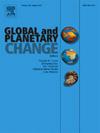Alternative mechanism of the Indian summer monsoon formation
IF 4
1区 地球科学
Q1 GEOGRAPHY, PHYSICAL
引用次数: 0
Abstract
The Indian summer monsoon is characterized by exceptionally intense cross-equatorial southwest winds, with its underlying mechanism vigorously debated. From the perspective of the general circulation, changes in regional atmospheric circulation are also ambiguous. Here, we present our latest research results, which show that the Hadley cells over the Indian Ocean change from two cells in boreal winter to a single cell in boreal summer, due mainly to a strong meridional shift of the ascending branch of the Hadley cells. Simultaneously, an enhancement of the Mascarene High also occurs over the south Indian Ocean. The coincidence of a deepening of the Indian Low and an uncharacteristically enhancing of the Mascarene High is likely to contribute to a northward expansion of the southern cell, with the northern cell totally vanished in the north Indian Ocean in summer, resulting in the Indian summer monsoon. This is the first time that the Hadley cells have been identified as having considerable inter-hemispheric variability, calling into question the long-held belief that the Hadley cells only occur in one hemisphere.
求助全文
约1分钟内获得全文
求助全文
来源期刊

Global and Planetary Change
地学天文-地球科学综合
CiteScore
7.40
自引率
10.30%
发文量
226
审稿时长
63 days
期刊介绍:
The objective of the journal Global and Planetary Change is to provide a multi-disciplinary overview of the processes taking place in the Earth System and involved in planetary change over time. The journal focuses on records of the past and current state of the earth system, and future scenarios , and their link to global environmental change. Regional or process-oriented studies are welcome if they discuss global implications. Topics include, but are not limited to, changes in the dynamics and composition of the atmosphere, oceans and cryosphere, as well as climate change, sea level variation, observations/modelling of Earth processes from deep to (near-)surface and their coupling, global ecology, biogeography and the resilience/thresholds in ecosystems.
Key criteria for the consideration of manuscripts are (a) the relevance for the global scientific community and/or (b) the wider implications for global scale problems, preferably combined with (c) having a significance beyond a single discipline. A clear focus on key processes associated with planetary scale change is strongly encouraged.
Manuscripts can be submitted as either research contributions or as a review article. Every effort should be made towards the presentation of research outcomes in an understandable way for a broad readership.
 求助内容:
求助内容: 应助结果提醒方式:
应助结果提醒方式:


